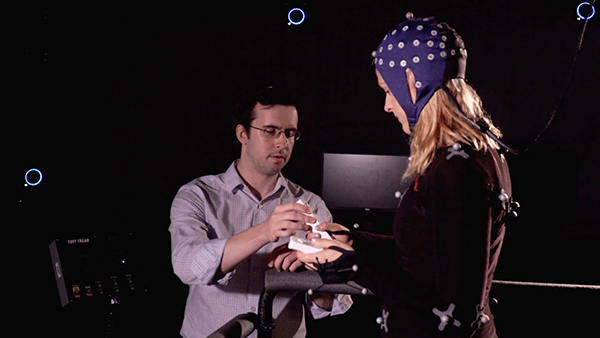HOT
 Production-Quality Lenses Directly from SLA 3D P…
Production-Quality Lenses Directly from SLA 3D P… Forging Ahead with Solar Energy and GibbsCAM CNC…
Forging Ahead with Solar Energy and GibbsCAM CNC… GibbsCAM Software Helps Race-Team Mechanics Beco…
GibbsCAM Software Helps Race-Team Mechanics Beco… Metro Aerospace Introduces 3D Printed Part for F…
Metro Aerospace Introduces 3D Printed Part for F… GibbsCAM Enables Rover Exploration Vehicle Parts…
GibbsCAM Enables Rover Exploration Vehicle Parts… Designing a Custom Boot for an Injured Penguin
Designing a Custom Boot for an Injured Penguin Asano Uses Geomagic 3D Scan Software to Drive In…
Asano Uses Geomagic 3D Scan Software to Drive In…
University of Rochester Medical Center Embraces Mocap to Research Neurological Disorders
Corvallis, OR—September 20, 2018—As originally reported in MedicalXpress.com, neuroscientists at University of Rochester Medical Center (URMC) have a powerful new state-of-the-art tool for studying diseases like Autism, Alzheimer's, and traumatic brain injury. MoBI, a Mobile Brain/Body Imaging system, combines virtual reality, brain monitoring, and motion capture technology, enabling researchers to study movement difficulties that often accompany neurological disorders and why our brains sometimes struggle while multitasking.

"Many studies of brain activity occur in controlled environments where study subjects are sitting in a sound proof room staring at a computer screen," said John Foxe, Ph.D., director of the URMC Del Monte Institute for Neuroscience. "The MoBI system allows us to get people walking, using their senses, and solving the types of tasks you face every day, all the while measuring brain activity and tracking how the processes associated with cognition and movement interact."
The MoBI platform – located in the Del Monte Institute's Cognitive Neurophysiology Lab – combines systems measuring motion kinematics and brain activity. Markered participants are asked to perform tasks and prompted to make decisions in a controlled environment. An OptiTrack motion tracking system records body movement with millimeter precision while brain activity is monitored via a high-density electroencephalogram (EEG) that detects electrical activity using small metal electrodes attached to the scalp.

Motion tracking and EEG data are synchronized, allowing researchers to track the areas of the brain that are being activated when walking or performing tasks and to study how the brain responds to each individual activity, or both at the same time.
The information could provide new insight into developmental diseases like Autism, which is often characterized by difficulty in processing sensory information from multiple sources and an abnormal gait. People with Alzheimer's, dementia, and sports concussions also experience movement difficulties.
"There is competition between the processes that allow you to walk well and the processes that allow you to think well," said Ed Freedman, Ph.D., an associate professor in the Del Monte Institute and principal investigator in the Cognitive Neurophysiology Lab. "We don't fall when we are sitting at a desk performing a task, we fall when we are walking down the street, avoiding traffic and other people, checking our phone, and thinking about what we are going to cook for dinner. We can use the MoBI to reveal underlying problems in the allocation of cognitive resources in individuals with neurological disorders because we are essentially stressing the system by asking them to perform task while on the treadmill."
Researchers are currently using MoBI to establish a dataset with healthy individuals, as a baseline of brain activity that can be compared to people with neurological disorders to identify new "signatures" of disease and brain processes that can be employed during clinical trials.
"When you get good measurements of how the brain works and contrast that activity with people who are depressed or suffer from Autism or dementia, you can develop biomarkers – or neuro-markers – of disease," said Foxe. "Using these neuro-markers we can then test whether a given intervention or therapeutic is actually working."




































